Mexico’s Top 10 Places to Visit

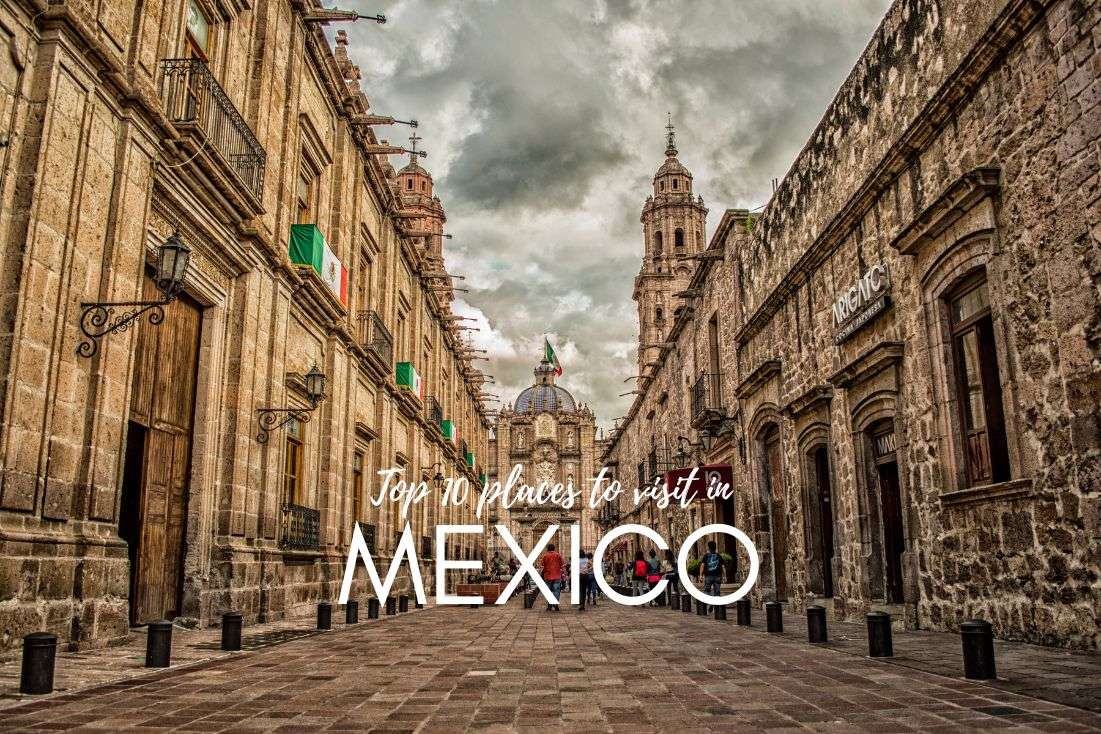
I can’t say which country in the Americas is my favorite, but Mexico is definitely up there. There is just so much to see, it’s so colorful and vibrant! Ancient history creeps in on every corner, and the diversity of nature is enough to keep you occupied for weeks at a time.
Plus, I can understand what they’re saying! Mexicans speak in some of the clearest and slowest Spanish I’ve come across, making me feel like I’ve mastered the language. Leering at Spain over here with their strange local dialects that not even other Spaniards understand.
This post may contain affiliate links. We earn a small commission if you make bookings through my links, at no additional cost to you. This helps us keep this blog free, thank you!
You might also be interested in reading:
- Yucatán Itinerary—2 Weeks Full of the Best Places to Visit
- Safety in Mexico—Is It Safe to Travel There?
- The Best Food in Mexico: 11 Things You Should Try + 3 You Shouldn’t
- 7 Best Aztec Ruins in Mexico
- 33 Mexico Travel Tips from Our Own Experience
You can learn all about the country in my other Mexico posts, but today we’re here to end your headache and help you choose the best places to see in Mexico.
This is my top 10, and trust me, I’m pretty picky and have very high expectations! You won’t miss with these top sights:
10. Mexico City
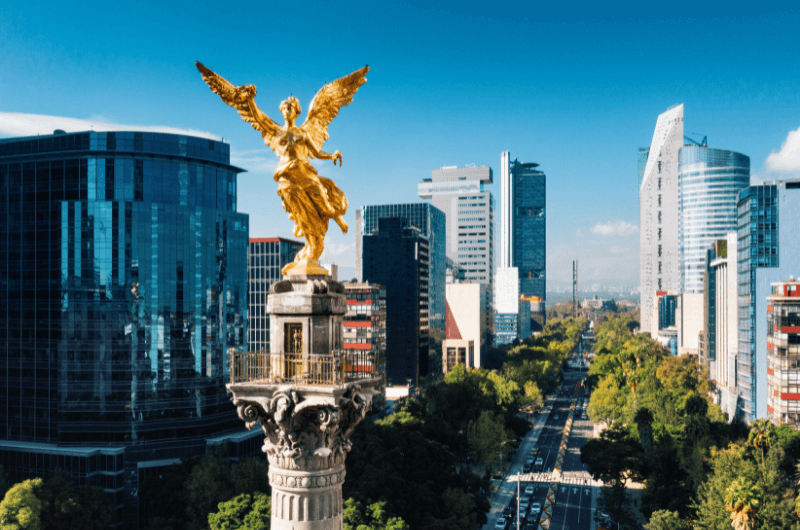
Mexico City is one of those cities you will either love or hate. It’s intense, has a bad reputation, is dense with humans, but it has a charm. I wouldn’t marry it, but I like it.
The air is dirty, but it is better than in the 90s, when birds would drop dead out of the sky and Mexico City was on top of all the wrong lists. Nowadays, you can see not only your hand in front of your face, but also the sky!
Mexico City has a ton of things to do and see and is sprawling. Starting at the over-the-top-huge central plaza, Plaza de la Constitución, you could (and probably should) visit the ruins of the main temple of Tenochtitlan, the city on which Mexico City was built. The Templo Mayor Museum tells you all about the Mexica people that used to live here.
Tip: Base yourself in a good hotel close to the main plaza. Book the top hotels in central Mexico City here.
It’s impossible to miss the Catedral Metropolitana, which stands proudly at one end of the main plaza. I don’t know if it’s the proximity to the US, but everything in Mexico seems to be big. And so is this church.
The Palace of Fine Arts is worth at least seeing from the outside if you aren’t a big art buff. The roof is made of tiles that shimmer in the sun and the white façade of the art nouveau/art deco building is eye-catching.
Not a fan of white? How about blue? La Casa Azul (aka The Blue House) is home to the Frida Kahlo Museum.
Not a fan of small? The Torre Latinoamericana (The Latin American Tower) is probably the first major skyscraper in the world to be built on active seismic ground. And it has resisted even the strongest of Mexico City’s earthquakes, so it’s still standing tall and proud in the historical center of the city, which is also a bit strange.
Apart from historical buildings and museums, Mexico City offers great refuges in its many parks. Chapultepec Park is like New York’s Central Park, sitting right in the city center, complete with a zoo, lakes, a castle and many museums, including the popular National Museum of Anthropology.
An interesting fact is that Mexico City is sinking. I mentioned above that Mexico City was built on the ruins of an ancient city. That is true. But this city was on an island in the middle of a lake. The lake was, for various reasons, one of them being expansion, drained. That has had consequences not only on water supply, but also makes Mexico City sink 50 cm into the ground every year. That’s 20 inches! Every year! It’s basically digging itself a hole because of the compacting soil underneath. It should stop eventually, they hope.
9. Teotihuacan
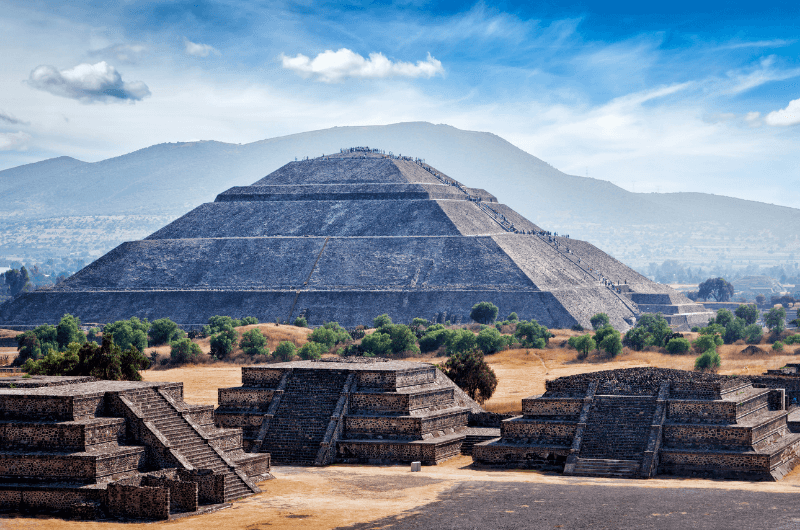
Teotihuacan was the largest city in the Western Hemisphere in its heyday, and it’ll still knock your socks off even today. This pyramid-filled city has a huge avenue, residential buildings and fascinating murals. Read all the details in our guide of Teotihuacan.
Most of “The City of the Gods” was built in the 1st to 4th centuries, though nobody knows for sure who built it. The Toltecs? The Totonac? A mix of cultures running from a volcano eruption? The only thing we know is that when the Aztecs discovered it, it was already in ruins.
Check out the city’s pyramids, one dedicated to the sun, and one to the moon. The Pyramid of the Sun probably served as the city center, because why not. It’s 220 meters (730 feet) wide, just like the Giza pyramid, but only about half as tall. It is terraced and has stairs going up it. Yes, you can climb them and experience it with your own two feet.
The Pyramid of the Moon served as a place of public ritual sacrifice. The vibe is very different than that of the Pyramid of the Sun.
Connecting the two pyramids is the Avenue of the Dead, kind of like a Main Street. No word on the shops and cafes of the past, but there are many ruins of multi-family residential buildings that line this street. The vibrant murals are a bonus.
Teotihuacan is shrouded in mystery to this day, with tunnels still be discovered and interesting finds being excavated. Just last year, 1800-year-old bouquets of flowers were obtained from underneath a pyramid. You can see many of these artifacts in the museum that is right next to the Pyramid of the Sun.
Perhaps the biggest mystery of them all is why or how this superpower of a city collapsed. Did it come under attack? Was it caused by extreme weather? An internal uprising? Nobody knows for sure, but it’s interesting to read the different theories, and deserves a comfortable spot on the top places to visit in Mexico.
Our top tips for Mexico’s best places: Even if you probably haven’t heard of it, Sumidero Canyon deserves your attention I always prefer driving, but taking the Copper Canyon Train is one exception I’ll gladly make No American city is more beautiful than Puebla! South of Washington DC, that is
8. Tulum
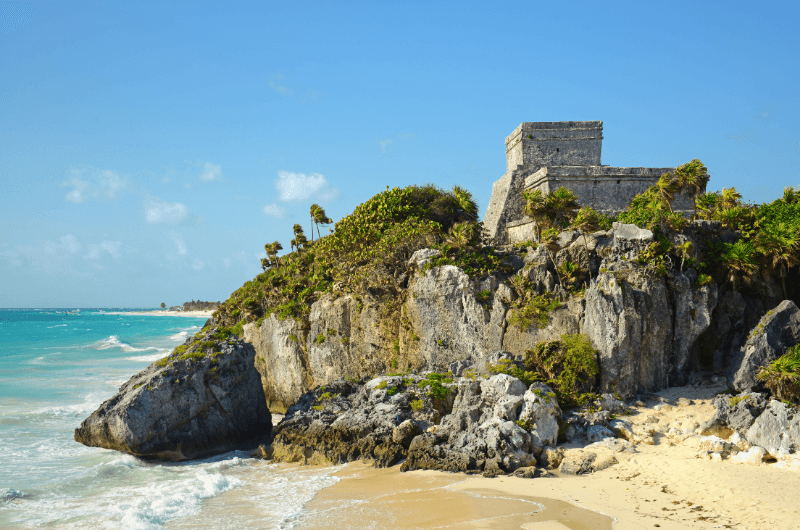
Tulum is the most popular Mayan site in Mexico, which inevitably means crowds and more crowds. The fact that the crowds are often the ones that come on tourist buses from party central Cancun, makes it a bit of a stress test for introverts or those that aren’t fans of the dudes and dudettes of Cancun.
The hype that Tulum gets also means that prices are hiked up and parking is a nightmare, so come prepared with nerves of steel and a wallet of gold. And whatever you do, don’t stay at one of the crazily overpriced hotels on the beach. Opt for hotels in Tulum city instead.
All of that, believe it or not, is for good reason and shouldn’t deter you from visiting Tulum.
Tulum is a walled Mayan city which flourished as the main port of Yucatan between the 13th and 15th centuries. The city was rich, not only thanks to the port, but also due to its access to an important obsidian trading route. All in all, the city thrived, and that’s why local people built many beautiful monuments—resulting in beautiful Mayan ruins.
The fact that the ruins are right above the sandy beaches adds to the attraction, as does the surrounding jungle. You may even get to meet the raccoon’s fancier cousin, the coati.
Even though I mentioned how expensive the actual city is, the ticket price to get into the prized ruins is a mere $4. Ironic, right?
Once you’ve had enough Mayan history for the day, you can visit one of the area’s natural limestone sinkholes, which are known as cenotes. If you want to swim in peace, choose some of the less popular ones, like Zacil-Ha. The crowds of Tulum will seem light years away. Just hop on Google for a quick look at the turquoise oasis and you’ll know you need to add at least one to your Mexico itinerary. Then again, flocks of visitors might be a sign of just how awesome a site is.
7. Montebello Lakes
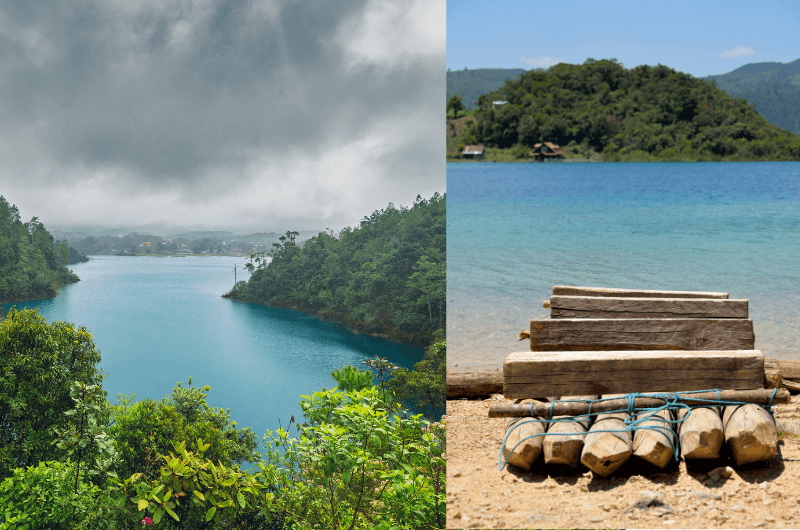
Ok I lied, some of the rafts on the Montebello Lakes are made of six logs, not five (see my description of the rafting below)
Lagunas de Montebello is a national park with a system of 59 crystal-clear lakes connected through underground rivers. The lakes sit amongst a rich pine forest and offer truly enchanting views: limestone rocks, special red moss, and underwater caves which can be seen clearly thanks to the purity of the water.
The park, which sits in the very south of Mexico in the state of Chiapas, has been designated a biosphere reserve by UNESCO. The lakes’ colors vary depending on their mineral contents from a lighter turquoise and dark green to a purple-black variety.
The area is vast, and only about 15 of the lakes are easily accessible by car or on foot. The closest you can get to the water is on a raft, so of course we did that. There are guides waiting to take you on long, narrow rafts made of 5 connecting logs and a wooden block for a seat.
Luckily, the lakes are not wild rivers, so you won’t get an unexpected dip in the water unless you start jumping around for some stupid reason. Otherwise I wouldn’t exactly trust these things with my life.
Chiapas is a great destination with many things to do if you like adventures and nature: rock climbing, zip-lining, hikes. You name it, Chiapas has got it. You can check all there is to do in Chiapas in our guide packed with awesome tips.
6. El Chiflón Waterfalls
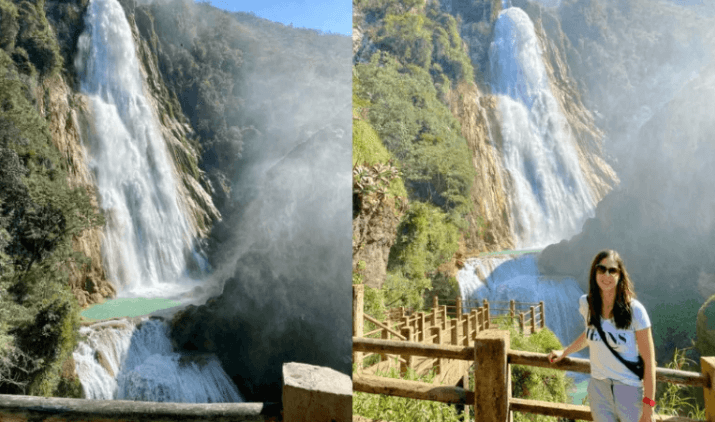
El Chiflón is a series of five roaring waterfalls on a crystal clear river just a hop and a skip away from the Montebello Lakes located in the southern Mexican state of Chiapas.
El Chiflón is on the list of our 5 favorite things to do in the San Cristobal area. Its location is 2.5 hours from San Cristobal city and is a wonderful easy hike of about 5 km (3 miles).
The trail goes along the river and offers almost surreal views of the roaring waterfalls, crystal-clear pools, and turquoise river. You’ll walk on a well set-up wooden walkway that offer numerous photo opportunities. You can climb all the way up to the tallest of the waterfalls, Cascada Velo de Novia. I mean it’s just water falling from the rocks, but the power of nature is undisputable! I’ve seen a lot of waterfalls in my day, but this one might be the best one yet.
Not only are the waterfalls beautiful, you can even bathe in them! Just make sure to stay in the designated areas. Some parts of the river and pools have dangerous currents that could make your dip more adventurous than you would’ve hoped.
If you want to walk the whole trail, take a dip and take time on each side of the river, you can spend half a day at El Chiflón, easy.
We’ve made a list of the best hikes in Mexico for you to peruse if exploring on foot is your thing.
5. Puebla
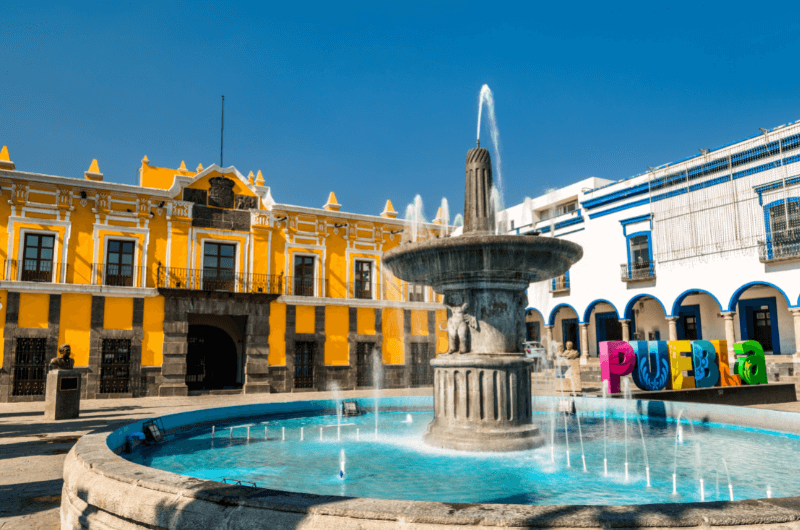
Which city in the Americas do I love second best? Puebla! I even wrote a separate article about the top things to see in Puebla, check it out.
The historic center is so beautiful I put it right behind Washington DC in my favorites list. It’s stunning! UNESCO thought it’s pretty nice too, so they put in on their heritage list. Copycats.
The Zócalo de Puebla is a large, bustling square around which the city center is, well, centered. It’s home to the massive Catedral de Puebla with none less than 14 chapels. The streets of the city center are narrow, lined with historical and sometimes very colorful colonial buildings. These house shops and cafes and are inviting for some good old tourist walks with no real destination in mind.
Tip: You can even stay in some of the beautiful colorful buildings in Puebla’s city center. The pink Hotel Andante and yellow Hotel Boutique Posada XVII are both fantastic and comfortable choices.
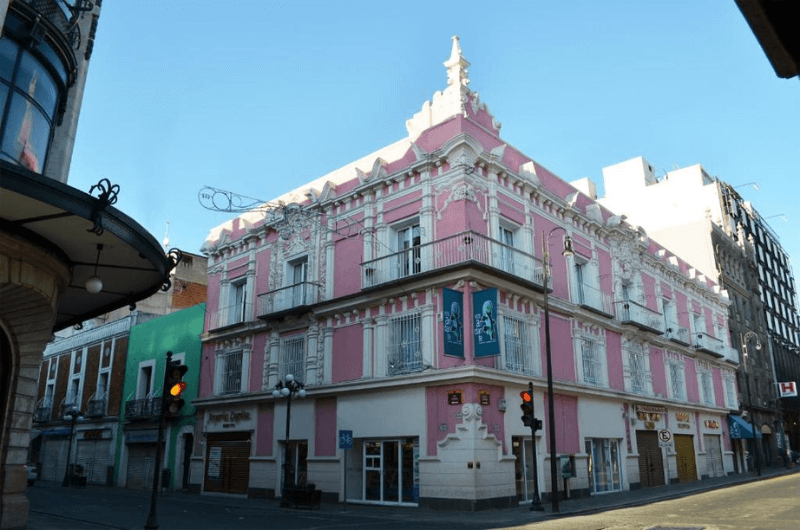
The pink facade of the Hotel Andante in Puebla
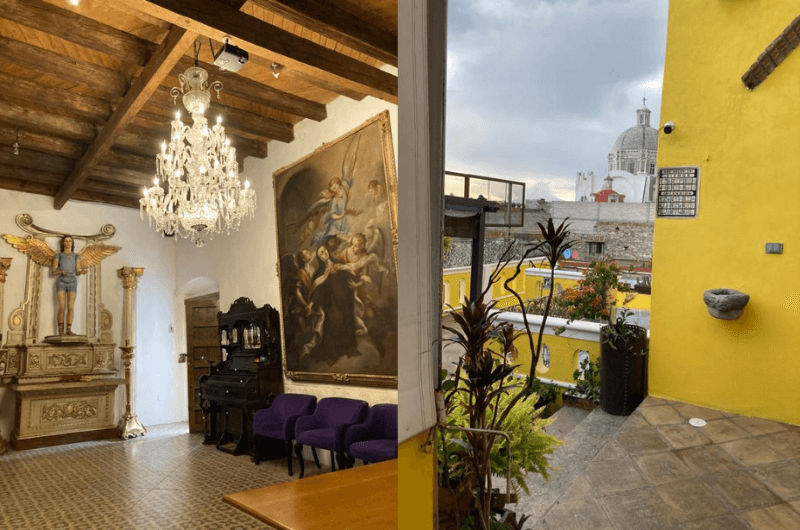
Or, if you don’t like just wandering, head to the Chapel of the Rosario in Church of Santo Domingo. The amount of gold used to decorate this thing will make your eyes pop out of your head. Maybe that’s why it was described as the Eighth Wonder of the World when it was built in the 17th century.
Other than that, you could shop for souvenirs at the El Parián handicraft market. The market stands look like Hansel and Gretel could be locked up inside, though feeding them with bricks would probably be counterproductive.
You can also step back in time—400 years to be exact—to the oldest public library in the Americas. The Biblioteca Palafoxiana breathes history, with dark wooden everything and tons of old, dusty books. Some from the 14th century!
Tip: Read up on driving in Mexico. You’ll want to rent a car to get to the best places in Mexico, but there are some things to keep in mind before you do.
Worth a mention is Cholula, about 30 minutes away from Puebla. This actually is home to the largest pyramid in the world—Tlachihualtepetl! It’s almost twice as wide as the one in Giza. Didn’t know that, did ya?
Be warned that the Catholics worked their magic here, so the top part of what was once a pyramid looks like a boring old hill with a church on top. Still, there is a lot to see and you can even climb the stairs on the bottom section. At least that still resembles a pyramid.
4. Uxmal
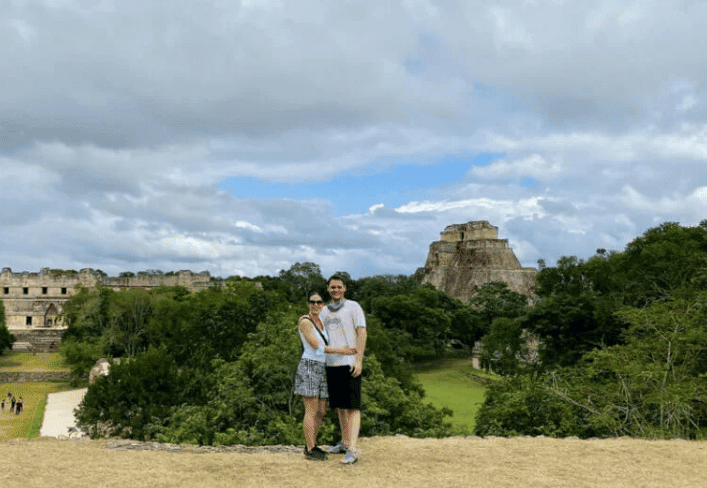
I have to mention one more Mayan city, though they are all a different shade of fascinating. Uxmal is special because there’s a ball game field and they sometimes sacrificed the losers of the game. I mean come on, wouldn’t you come here just after reading that? Ok, ok, the main pyramid is particularly striking. Now will you visit?
Uxmal is in the jungle close to Mérida in Yucatan state and was home to 25,000 people at its height. The buildings are built in typical Puuc style: smooth walls, columns, detailed cut stones (stucco) and reliefs representing snakes.
The Pyramid of the Magician is the tallest structure in the city. How tall it is remains to be a matter of dispute, probably with each person doing the measuring holding their ruler at a different spot or something. The accepted median is 35 meters (115 feet). It is different from other pyramids and, with its elliptical base and rounded sides, definitely the most unique Mayan structure of the Yucatan peninsula.
You can’t climb this particular pyramid, but you can climb onto and into just about everywhere else. This is specific to Uxmal, you really can get up close and personal with the historical artifacts. Go on top of the Grand Pyramid for the best views of the ancient city.
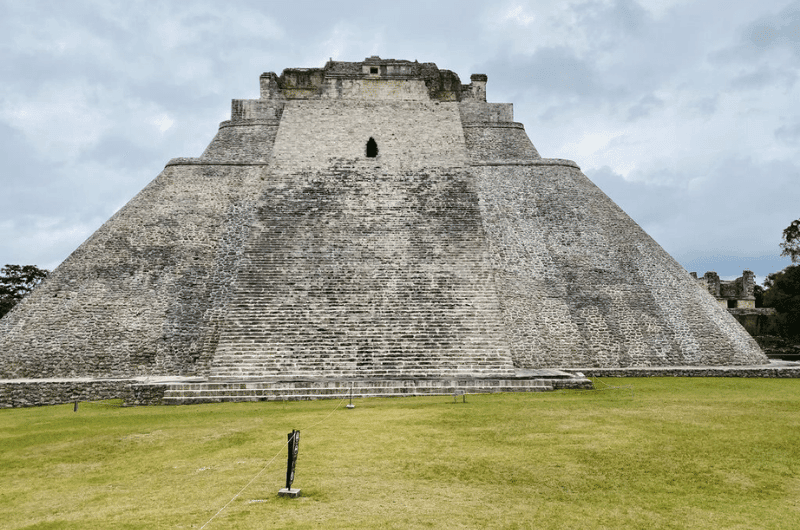
The one thing which grabbed my attention was the ball game court. The Maya were absolutely obsessed with tlachtli, a game in which they had to toss a ball through a stone hoop. It’s kind of like basketball, but you can’t use your hands. Lots of elbow and hip action. And sometimes, the losing team was ritually sacrificed. How very… different. Talk about pre-game jitters!
Uxmal is often fighting for attention with Chichen Itza. And granted, they are both equally impressive. Why choose Uxmal? First of all, Uxmal is the best example of the elaborate carvings of Puuca architecture. And being the less famous and not one of the Seven Wonders of the World, the crowds at Uxmal are nothing compared to Chichen Itza. And we still recommend getting to Uxmal as soon as possible in the morning, otherwise parking becomes impossible. Book a hotel in Merida so you can get to Uxmal bright and early.
You can compare the top 5 Mayan cities in Mexico in another post.
3. Copper Canyon
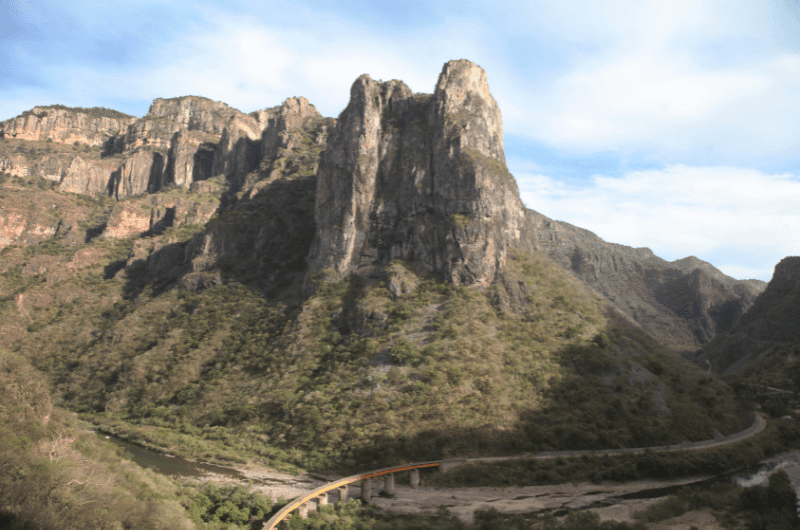
Copper Canyon is a group of 6 distinct canyons all hugging each other, creating one humongous canyon four times as big as the Grand Canyon. So naturally, people flock to go see it. Each individual canyon was created by one river. They eventually all merge into the Rio Fuerte and drain out into the Gulf of California.
Located in the northwest corner of the country, in Chihuahua state, this is one of the absolute top things to do in Mexico.
The canyon is home to the indigenous Tarahumara people. They mostly choose to live way off the beaten path, away from tourist folk, conserving their culture. Lucky for said tourist folk, that doesn’t keep them from coming over to where the gringos hang out to sell traditional handicrafts and food items. Souvenirs, anyone?
You can visit Copper Canyon on foot (hire a guide!), on a horse or on a mountain bike (head to Creel for those options). You can even zip over it at Barrancas del Cobre Adventure Park. But the most popular way to go is by train.
The Copper Canyon Train, otherwise known as El Chepe, is a 670 km (415 mile) railroad from Chihuahua to Los Mochis. For a visit to Copper Canyon, you’d only be going part of the way. The popular option is to start in Los Mochis and continue through the towns, hopping on and off, sometimes staying the night in the canyon. You wouldn’t want to go further than Creel. Straight through, the trip takes about 4 hours.
Tip: All of the towns where the train stops offer some sort of accommodation. If you’re looking for a little comfort, stay at Hotel La Estacion in Creel. It’s the best hotel in the area.
Needless to say, chugging along the mountains, through tunnels and over bridges, peering deep into the canyon, is a spectacular and very memorable way to see the area. If you are able to find the time, go. If you aren’t able to find the time, consider leaving something else out. The Copper Canyon Train route is one of the best in the world!
2. Popocatépetl and Iztaccihuatl volcanoes
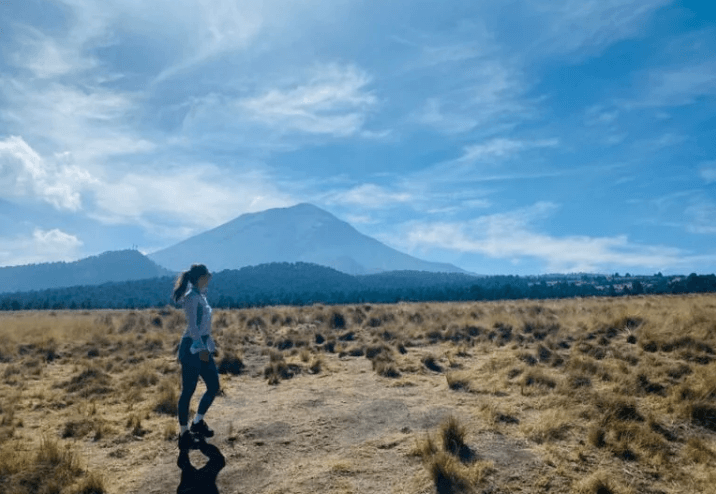
Did you know Mexico has around 40 active volcanoes? And that Popocatépetl is considered one of the most dangerous in the world? The reason for this is that it is not only active and currently erupting, but if someone got the gods really angry, a proper eruption could cover nearby Puebla and even Mexico City under Popocatépetl’s lava.
Luckily, volcanologists can predict spikes in activity, so visiting the area is deemed safe. You still can’t climb the actual volcano. That would be just plain stupid.
This is where Iztaccíhuatl comes in. You can climb this volcano, because it is active but dormant. That means it’s still going to erupt sometime in the future, but it’s currently taking a long nap.
Both of these volcanoes are within the Izta Popo National Park. I had high hopes for this park and it still managed to exceed my expectations. The scenery is amazing. Before even setting out on a hike you will be impressed. Even if you just sit in your car on the parking lot because the high altitude makes you short of breath—you will be impressed.
Like I said, you can’t climb Popocatépetl, so you will be hiking under the volcano and it’s a once-in-a-lifetime experience. There are 3 trails ranging from easy to hard (there are more hiking options, just ask a guide, but these are the three official ones).
It’s important to keep in mind that most areas of the park are at least 3,000 meters (9,840 feet) above sea level, meaning thinner air. That alone could make even the easy trail undoable for some people.
Me being me, I’m going to recommend the hard trail that leads to none other than Iztaccíhuatl. You will sweat, you will groan, and you will be trying to catch your breath. And it will be awesome! The slope is steep and the elevation gain enormous. The part just below the summit is really challenging. And the views from the top are arguably the best out of all Mexican volcanoes.
You can either sink your teeth in and hike all the way to the peak (13 kilometers (8 miles) there and back), or you can just get a taste of Iztaccíhuatl and turn around at Tercer Portillo, which is before the going gets really tough. Taking a guide is a good idea either way. The trail starts at La Joyita parking lot.
We put together a detailed post about hiking in the Itza Popo National Park. Check it out. I’ve also included my favorites from the park in the top hikes in Mexico post.
1. Sumidero Canyon National Park
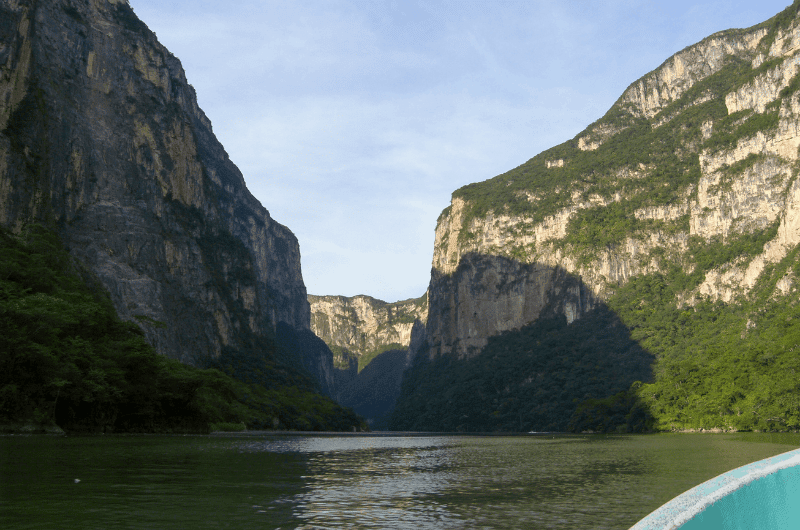
Behold, the awesomeness of Sumidero Canyon from the little blue tourist boat
My best, most favoritest top spot in Mexico? (Yes, favoritest is a word, in case you’re wondering.) Cañón del Sumidero, hands down. It’s the Yosemite of Mexico. And almost nobody knows about it!
Sumidero Canyon is 200 meters (655 feet) wide and 13 kilometers (8 miles) long with a river running through it. The 1,000 meter- (3,280 feet) high walls jutting almost vertically up from the water are unlike anything you’ve ever seen from a little blue boat. You’ll feel tiny and vulnerable with the towering masses of rock looming above you. If they had feet, they’d squash you like a fly.
Going through the canyon on a boat is the way to go. It takes 3 hours and leaves from a small town called Chiapa de Corzo. You’ll get a unique look at the waterfalls, caves, rock formations, birds and crocodiles, one that you just won’t be able to enjoy from the road above it.
That said, the road called Miradores del Cañón del Sumidero takes you through no less than four stunning viewpoints on the 17 km (10 mile) road.
Tip: If you have a hard time deciding which way to see the canyon, just ask Google Maps. It offers street views for both the road and the river, so you can cheat a bit and see what you think you’ll enjoy most.
One of the most famous waterfalls of Sumidero is the Christmas Tree Waterfall, or Árbol de Navidad. You’ll see why it’s called that right away. Or, climb up a ladder straight from your boat to the Cave of Colors. It serves as a chapel and glistens in shades of pink thanks to the minerals in the rocks.
This being our favorite place to visit in Mexico, we’ve put together a comprehensive travel guide just for Sumidero Canyon. I think you’ll find it very useful, especially since there isn’t that much info out there about visiting it. We include restaurant tips, tour starting points and best times to visit (spoiler: don’t visit on a Tuesday).
What are you waiting for?! Aren’t you just dying to get to Mexico to see all of these amazing places? If you’re ready to go, you can book your Mexican hotels here. Wink wink.
You can support our blog
If you like our posts and would like to get some awesome bonus material like itineraries, our e-book or exclusive content, you can check out our Patreon memberships. If you decide to show your love, thank you!


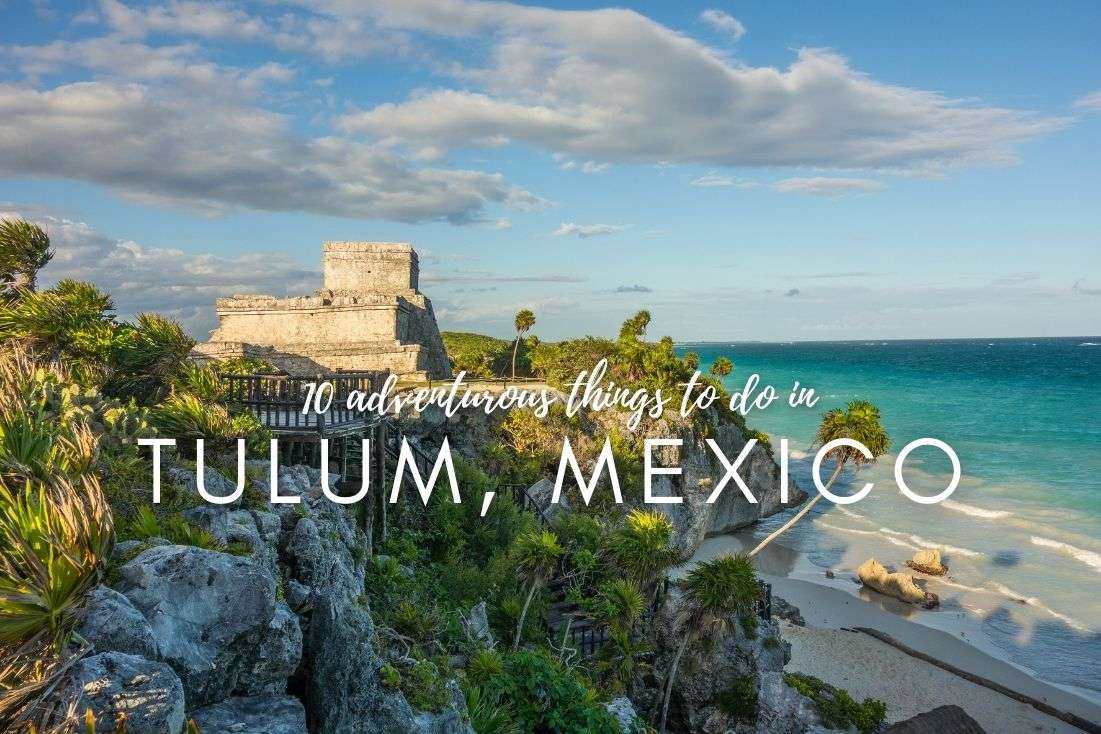
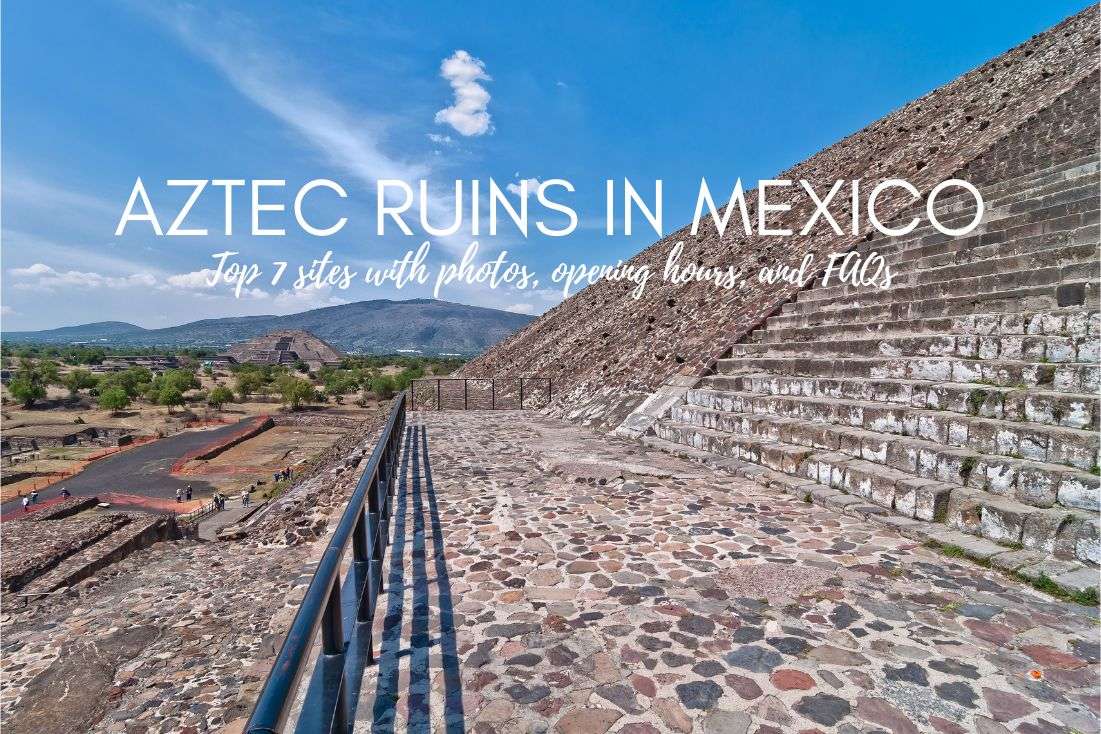






Comments | Thoughts? Give us a shout!